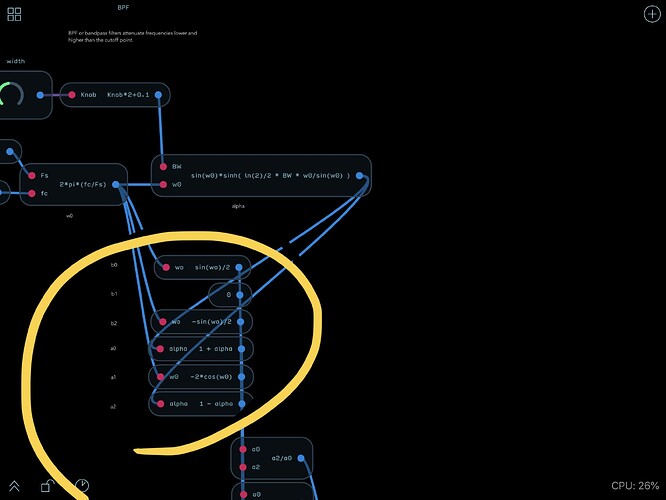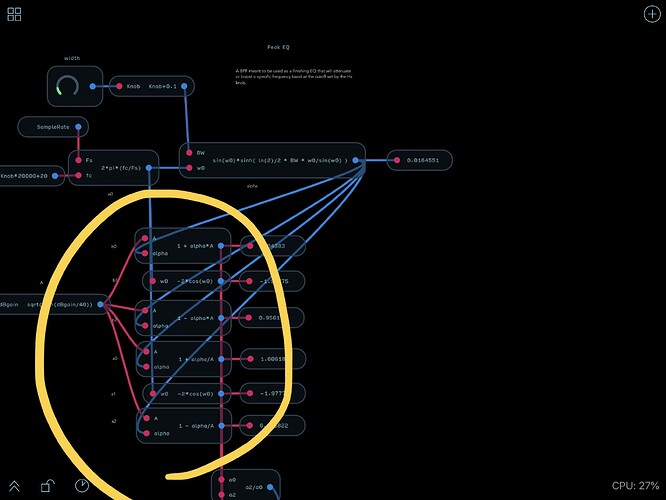So I’ve been using @stschoen’s equalizer modules (like this one) to make a clone of a filter and found that Peak EQs pretty exclusively instead of the Bandpass filters for the middle bands.
Peak EQ: A BPF meant to be used as a finishing EQ that will attenuate or boost a specific frequency band at the cutoff set by the Hz knob.
BPF: BPF or bandpass filters attenuate frequencies lower and higher than the cutoff point.
Based on these definitions, it sounds like the Peak EQ attenuate or boosts the frequency that the Hz is set at and the BPF just attenuates the frequencies around that cutoff point rather than boosting or attenuating that frequency band itself. Am I correct with this thinking?
The main differences seem to appear in these expressions after the main quadratic formula:
What’s the primary difference and reasoning for using one over the other? Any links to help me understand biquad filters in general or the subtle differences in the digital biquad methods available are appreciated.

